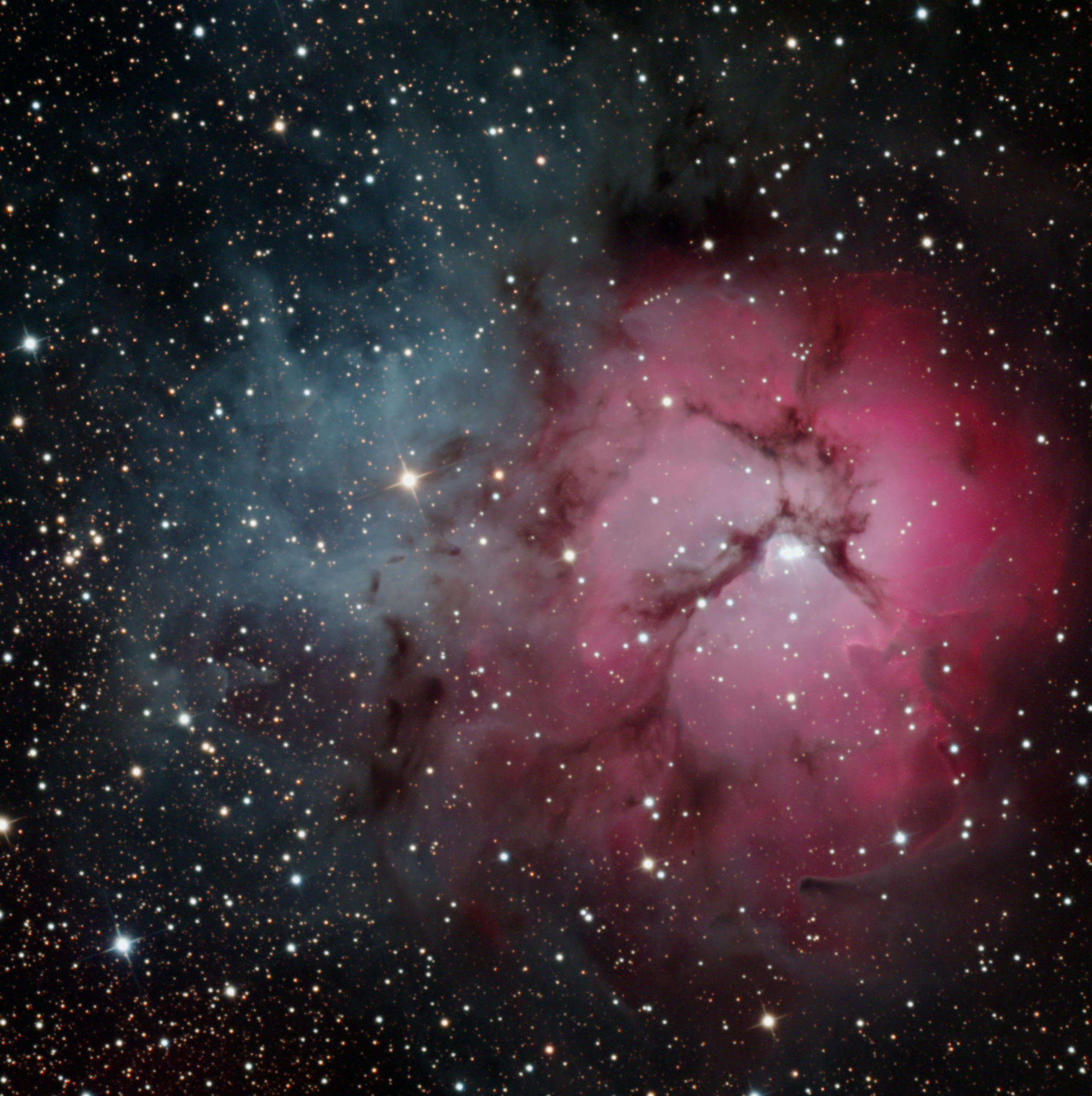
The Trifid Nebula is so named because it is divided into three regions. The red color comes from clouds of gas illuminated by one or more stars in the center of the nebula that excite the gas and cause emission radiation of the gas. The blue color is simply a reflection of star light from gas clouds that are not close enough to the stars to be heated like the red colored clouds, and thus do not produce emission radiation. This object also includes dark nebula regions as well. The contrast between the emission nebula clouds and the reflection nebula clouds is a beautiful feature of the Trifid Nebula. This is one of my favorie objects because it has all three different types of nebulae.
This nebula is between 2,500 light-years and 5,000 light-years away from us. The Trifid Nebula is in the same region of the sky and at about the same distance as the Lagoon Nebula. The Trifid Nebula was probably first discovered by French astronomer Le Gentil in 1747. It is believed that it was first named the "Trifid Nebula" by John Herschel, the son of the famous astronomer William Herschel, in the mid-1800's. Charles Messier included it in his first list published in 1769.
This is an LRGB composite CCD image taken with the 32-inch Schulman Telescope on the summit of Mount Lemmon, Arizona, at the University of Arizona SkyCenter. I operated the telescope remotely.
M20 (NGC 6514)
Constellation: Sagittarius
RA: 18h 02m 18s Dec: -23d 02' 00" (J2000)
July 2, 2016
Image by Sid Leach
Mount Lemmon, Arizona
Recent Images.
Complete list of images.
Description of equipment used to acquire images.
Home
Feedback and comments should go to Sid